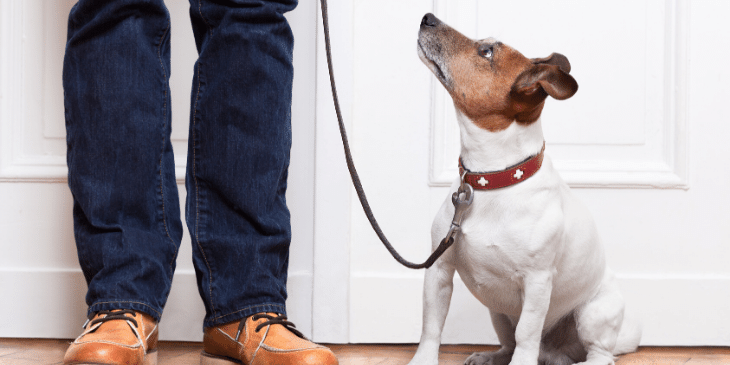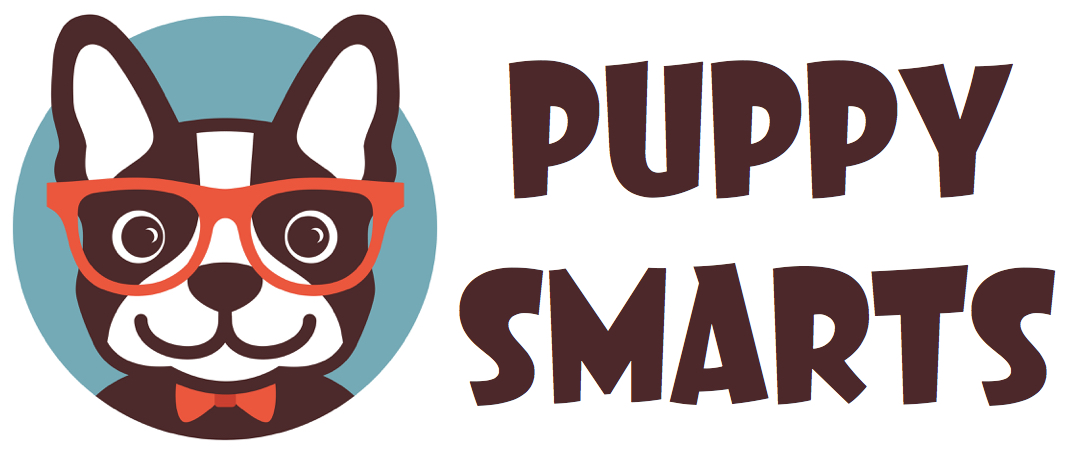5 Useful Commands for Dogs On-The-Go

Contents
There are certain commands every dog should know for his own safety, such as sit, stay, and come. He should know not to run out an open door without permission. And, crate training is extremely helpful for most dogs and puppies. But, if you travel with your dog, teaching him some additional commands will ensure that he’s a good citizen no matter where the road takes you.
Here are five useful commands for dogs on the go, plus how they work and how to teach them.
1. With Me
Some dog trainers call this command “heel.” “With Me” tells your dog that you want him to stay right at your side until you tell him otherwise. It can be very useful when you’re visiting a crowded place, crossing a busy road, or trying to stay clear of other dogs.
· How the “With Me” Command Works
When you say the command, “With Me,” your dog makes direct eye contact with you and stays at your side, whether you’re walking or standing still. When you’re ready to release him to walk normally, you say “Go Sniff.”
· How to Teach Your Dog the “With Me” Command
As with teaching most commands, things will go more smoothly if you start teaching them in a place with few distractions. Put your dog on a six-foot leash (not retractable!) and stick a handful of his favorite treats in your pocket.
Show him a treat, say “With Me”, and take a step forward. When he moves with you, offer praise and give him the treat. If he pulls or doesn’t move with you, simply ignore it and start over. Keep repeating the process, slowly increasing the number of steps until your dog is readily walking beside you until you stop.
Now, move to an area with a few more distractions, such as your backyard. Continue practicing until he follows the command reliably.
Now, you can begin releasing him from the command with the cue “Go Sniff.” Remember to practice the command regularly so the behavior becomes automatic, even when you’re in an area with more distractions.
2. Watch Me
Use the “Watch Me” command when you know something is coming up in your path that will be tempting for your dog, such as an animal he might want to chase. It redirects your dog’s attention to you, preventing him from getting into trouble.
Keep in mind that this command works best if you see the temptation before your dog does… getting his attention after he sees that little boy walking with a hot dog right at nose level might be tough! Many times, all it takes is 30 seconds of eye contact for the temptation to move on by.
· How the “Watch Me” Command Works
The “Watch Me” command is very straightforward. The goal is simply to get your dog to maintain eye contact with you until you release him.
· How to Teach the “Watch Me” Command
Choose a low distraction area and start with your dog in the sit position on a six-foot leash. Hold a treat up to his nose to get his attention. Say “Watch Me,” and move the treat up to your eye. After a few seconds of eye contact, offer praise and give him the treat.
Repeat the steps over and over again, gradually increasing the time of eye contact. Once your confident your dog has it down, slowly eliminate the treat. You can use the same “Go Sniff” command to release him if you like.
3. Go to Bed
Teaching the “Go to Bed” command will really simplify your life when traveling with your dog. Use it when you’re dining at a pet-friendly restaurant, hanging out in a cramped RV, or to keep him safe around the campfire. It’s also great at outdoor concerts, when you’re a guest in someone’s home, or even in hotel rooms. When your dog is anxious, this command will build confidence and help him feel safe in a stressful situation.
· How the “Go to Bed” Command Works
When you tell your dog to “Go to Bed,” he goes to a rug, blanket, or towel that you’ve placed on the floor and lays down. A towel is a great choice for dogs on the go because it’s easy to pack.
· How to Teach the “Go to Bed Command”
Grab your rug, blanket, or towel, and some of your pup’s favorite treats. Place the towel on the floor next to you. Hold a treat over the towel and say, “Go to Bed.” When your dog steps on the towel, offer praise and let him have the treat. Repeat many times until your dog begins to connect standing on the towel with the command and reward.
Now, repeat the steps, but this time, have him sit on the towel for a few minutes. Eventually, work up to having him lay on the towel until you release him. This one will take lots of patience and practice, but it’s so worth it in the end.
4. Wait
“Wait” is an extremely useful command for dogs on the go. Issue this command tells your dog that you want him to stay where he is until you release him. He doesn’t have to sit or stay for several minutes, only for a moment or two. It can be used while you’re attaching a leash at the door, before you cross a street, or anytime you want your dog to simply wait until you’re ready to go.
· How the “Wait” Command Works
You’re walking along and come to a crosswalk where you need to wait for the light to change. You tell your dog to “Wait” and he stands next to you until you tell him it’s ok to start walking again.
· How to Teach the “Wait” Command
Your dog needs to learn that following this command will get him what he wants. For example, waiting patiently at the door while you attach his leash is the best way to get outside.
Start with your dog on a leash and have him sit at the door. Say “Wait,” and open the door just a crack. If he moves, close the door. Continue the steps until he hesitates, even if it’s just for a second, then open the door and go out.
Continue practicing until he goes for longer periods without rushing out. Once he learns that waiting gets him where he wants to go, begin practicing the behavior in other places, such as at the car door or before crossing the street.
5. Touch
Teaching your dog the “Touch” command is extremely useful in public places. It can be used to get your dog to move somewhere quickly or keep your dog’s attention for a moment when you’re on the go.
· How the “Touch” Command Works
When you say “Touch” your dog puts his nose to your hand and follows it wherever it goes. It works great in pet-friendly restaurants for moving your dog away from the server. The last thing you want is your hungry dog tipping over the server’s tray!
· How to Teach the “Touch” Command
Put a treat in your closed hand and place it in front of your dog’s nose, saying “Touch.” Let him touch and investigate your hand with his nose for a second and then give him the treat. Repeat the process a few times until he begins to associate the command with touching his nose to your hand.
Next, put your hand behind your back and wait a moment before repeating the previous steps. Have him touch your hand longer and longer until you’re confident he has the behavior down pat.
Now, repeat the above steps, but move your hand a short distance. Reward him for following your hand and gradually increase the distance. Once the behavior becomes automatic, begin eliminating the treat gradually until he follows the command without it.
Tips for Success
The following tips will ensure success when teaching your dog new commands.
- Keep your training periods short, but repeat them daily, or even several times a day.
- Stop before your dog gets bored.
- The more challenging the command, the more appealing the reward should be.
- Start in a low distraction area and increase distractions gradually.
- If your dog has a setback, go back to the beginning and repeat the steps until he gets it again.
Final Advice for Training Dogs On the Go
These commands will keep your traveling dog safe and ensure that he’s a good citizen when you’re on the go. You’ll both be more relaxed, and your dog will be happier knowing what’s expected of him. Teaching your dog new commands also strengthens your bond and engages your dog mentally, which is super important.
You could even use the training techniques in this article to teach your dog how to pose for vacation pictures. Before you know it, your best buddy will be the star of everyone’s Instagram feed!
